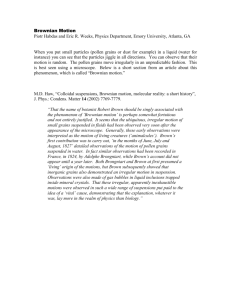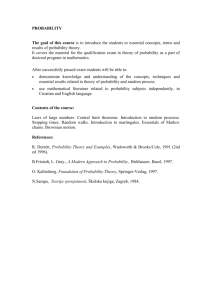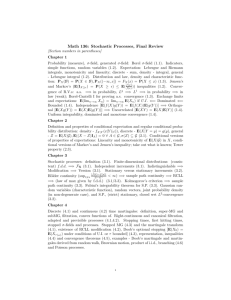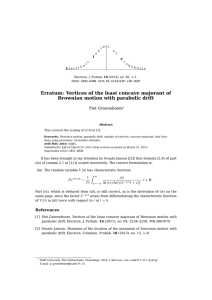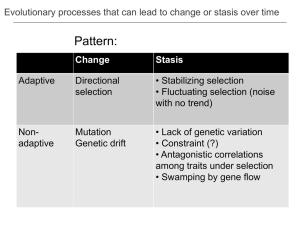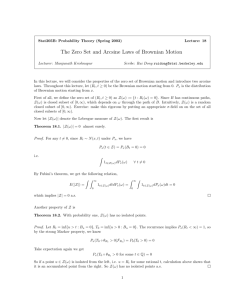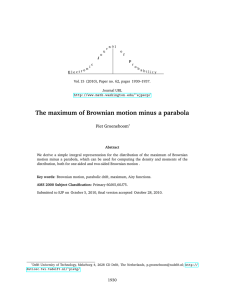Fractals in Finance and Risk
advertisement
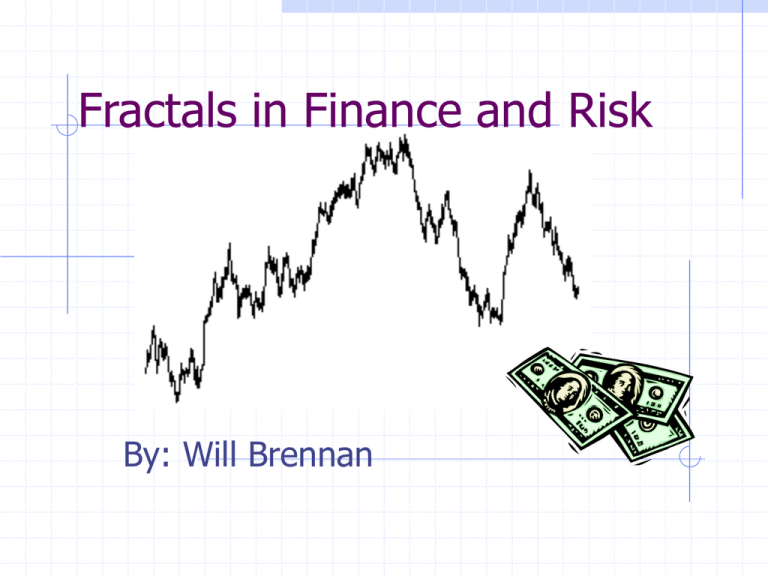
Fractals in Finance and Risk By: Will Brennan Why does it matter? Finance played a crucial role in the development of fractal theory Fractals are used in finance to make predictions as to the risk involved for particular stocks. The Current Model Brownian Motion discovered by Louis Bachalier in 1900 (Theorie de la speculation). Theory was later developed by Albert Einstein, Jean Perrin, and Norbert Weiner Brownian Motion http://classes.yale.edu/Fractals/RandFra c/Brownian/Brownian3.html The Mathematical formula behind Brownian Motion: |dYi| = (dti)1/2 Brownian Motion and Stock A graph of IBM stock vs. a graph of Brownian Motion. When stocks are graphed price vs. time, and thus look similar to Brownian Motion A Problem Emerges…. However, when the graph is plotted by successive prices, differences emerge between stock and Brownian Motion. An Alternate Method? While the Brownian Motion model can be adjusted to fit observed data, the BM model is not useful in predicting data. Another method is based on the observation that stocks are statistically self-scaling. The method is to input a simple algorithm that provides the same scaling, and then observe how many features follow automatically. Cartoons aren’t just for kids Because this method is designed with no thought to the mechanics of the stock market, it is called a cartoon. Begins with an initiator and continues with a generator Step 1:Initiator and Generator All 3 segments of the Cartoon Satisfy the condition |dYi| = (dti)1/2 dt1 = 4/9 - 0 = 4/9, dY1 = 2/3 - 0 = 2/3, so dY1 = (dt1)1/2 dt2 = 5/9 - 4/9 = 1/9, dY2 = 1/3 - 2/3 = -1/3, so -dY2 = (dt2)1/2 dt3 = 1 - 5/9 = 4/9, dY3 = 1 - 1/3 = 2/3, so dY3 = (dt3)1/2 Step 2: Generate! Step 3: Randomize In order to make more realistic, introduce randomness in the direction of the linear segments The Final Cartoon Money mimics Cartoons When this new cartoon is placed alongside financial data, they are very similar in terms of large jumps and correlation. Conclusion Through utilizing a cartoon, a sufficient fractal model is able to make up for the failings of the Brownian Motion model, allowing for investors to predict financial risk.





